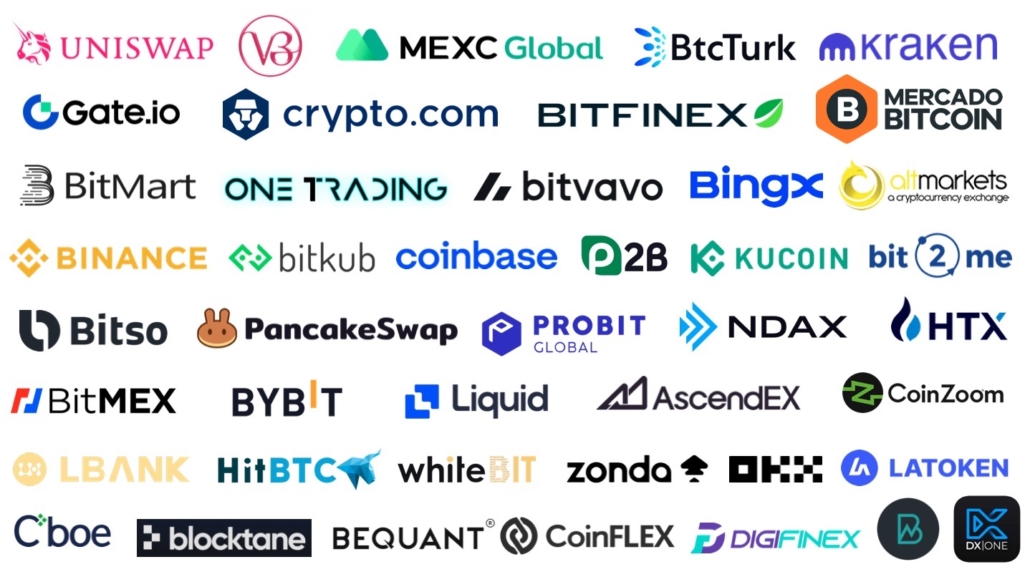Disclaimer. We do not offer market making bots or any other trading software anymore. We have done it for years and have seen that we could better serve our partners by offering them a full service, not only a tool. Empirica is now fully focused on providing liquidity for crypto projects as a market maker. If you need help in that area, let us know!
The basics
What is a market making bot?
Market making bot is an automated investment strategy that is used to provide liquidity by filling up the order book with buy and sell orders so that other market participants, buyers and sellers alike, can execute their orders whenever they need to. However, the term ‘bot’ indicates that we are talking about a simplified system or script that connects to exchanges to realize one or a few single tasks, like reading a data feed and sending orders. Bots, compared to software systems, usually lack more advanced functionalities like order execution and recovery layer, algorithmic framework, data processing and storage, and risk management. Usually, bots are inferior in one crucial aspect – latency.
How does a market making bot work?
The market making bot constantly quotes buy and sell orders on both sides of the order book with a defined spread (the spread is a difference between the ask and bid price). The algorithm has a few characteristics that make it different from other algos:
- It has to be able to react quickly to changes in the market, hopefully before other investors will
- It has to be fully automated
- It has to minimize the risk of adverse price movement, adequately managing the open position.
A key aspect
When market makers lose money?
Let’s start the analysis of whether bots can be used for market making or if it is better to build our own low-latency class system from when we market makers are losing on the market. Over the years of our own operations, I would distinguish the following categories of reasons:
- We lose money to informed traders, especially if informed traders have access to significant inside information that gives them an advantage and causes them to be able to anticipate or cause the market to move. In such cases, informed traders can take advantage of market makers by buying or selling securities at prices that are more favorable to them.
- It often happens that we lose on sudden big moves. As we are required to place our orders 24/7, the sudden high volatility caused by a sharp move makes it possible for us to hedge our positions at the right prices. Then we take positions at the wrong prices, and we have no way to close them because the market is already in a completely different place. We have a loss.
- Competition. Market makers may lose money if they face more technically advanced competition from other market makers or other types of traders, such as high-frequency traders, who can execute trades faster and more efficiently or have better fee terms on a given market. stock exchange. Then we do not lose suddenly, but we slowly bleed out, losing small amounts in hundreds of transactions to stronger competition.
- Technical errors. Our entire operations are based on software. Being present on the market all the time, we execute 99% of transactions through our systems. Our systems carry out a large part of transactions, also when we are not looking. We are only as good as our systems are reliable. And mistakes here can cost a lot. Lost orders, unhedged positions, wrongly calculated PnL, and unannounced modifications in the exchange’s API, there are plenty of examples of situations that may cause losses due to technical errors.
- Third-party risk. When the stock exchange on which part of the funds collapses, or the crypto project that we provided liquidity for with our capital collapses, we must reckon that we will not be able to recover this part of the capital.
Are bots good enough for market making?
Market making involves a high level of risk, and market makers can lose money due to various factors. But some of them can be minimized. Whoever does it better wins in the long run.
Three of the above factors – Variability, Competition, and Errors – can be addressed with a well-built system. The fast system, low-latency – with proper error and risk control, it ensures that:
In the event of high volatility, we will be able to escape with orders and not be taken advantage of by other market participants
With a system as good or better than the competition, we will not be outplayed in thousands of small transactions. Otherwise, there will be no choice but to withdraw from the market where there is someone with a better system.
Fewer errors and better protection against them mean fewer losses, which in the long run, accumulate to significant sums.
All three areas cannot be adequately addressed by a simple system like bots. To build the system we use today, we’ve been building for the last ten years with a 15-person dedicated team. Shortcuts won’t work. They can work with other strategies and are more straightforward and efficient with reaction times of a second or more. But not with this kind of operations.
What characteristics should market making software have?
Some key characteristics that high frequency software systems include the following:
- High performance. Market making software needs to be able to process a large number of transactions in a short amount of time, so it should be designed to be fast and efficient. This is hard and requires a top-notch software development team.
- Scalability. The volume of transactions will increase as you expand to more instruments. So the system needs to handle the increased load without slowing down. Slowing down means we may react a data from a few seconds before. So in a low latency world, it’s historical data.
- Reliability. As a market maker, you need to provide liquidity 24/7. So the system needs to operate continuously without failure. It needs to be designed with robustness and fault tolerance.
- Flexibility. The system needs to adapt to changing market conditions and requirements. It needs to be designed to be modular and configurable.
- Security. The system needs to protect against both unauthorized access and data breaches. It needs to be designed with security as a priority.
- Data management. The HFT system generates large amounts of data, so it needs effective data management capabilities to store, organize, and analyze it.
- Integration: The system will need to integrate externally with exchange systems and internally with risk management and back-office applications.
And more…
Hungry for more knowledge?
For those who prefer to consume knowledge offline and need to know more, a short list of books on market making.
Learn the details on how we provide liquidity for token projects.
Schedule a talk with us and check
if we can help your project
Connectivity to mainstream and niche crypto exchanges
Our solution is integrated with major cryptocurrency exchanges. The list of connectors that are built, maintained, and updated with every change in API is growing and includes exchanges like Kraken, Coinbase Pro, Binance, Bitfinex, crypto.com, Bequant, HitBTC, Bittrex, Bitpanda.
As our partner, you can influence our development team’s roadmap for the next venues we connect. You can also request building a connector to any other exchange, OTC broker or crypto liquidity provider. Let us discuss that in a call.
A CLUE
Providing liquidity is a constant process where your capital is always at risk. Therefore it is all about stability, performance, precision, and adoption to changing conditions and evolving exchanges’ APIs. To not be gamed by other market participants, you need to use market making software built on architecture that addresses these requirements, otherwise, you will lose with those who do. Most crypto trading bots are doing fine with some simpler alpha or execution strategies. But for efficient and profitable liquidity provision, usage of a retail market making bot may be not enough.

